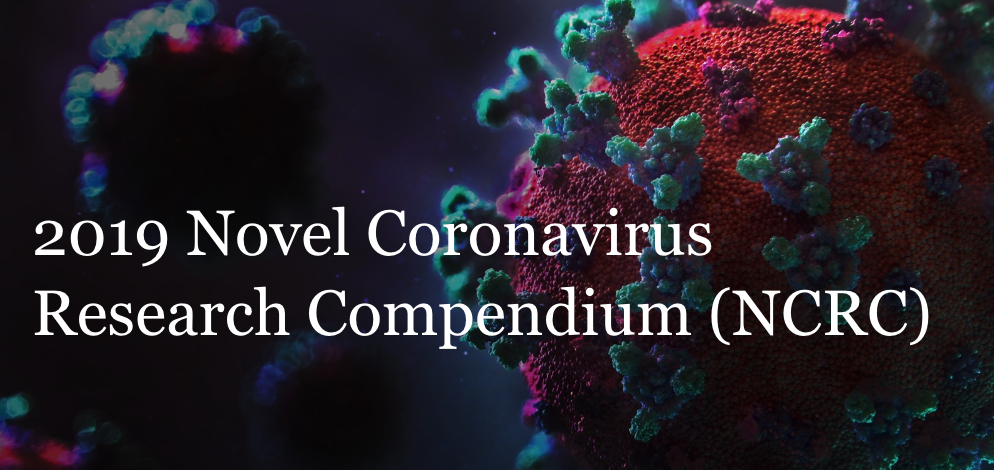Implication of backward contact tracing in the presence of overdispersed transmission in COVID-19 outbreaks
This article has been Reviewed by the following groups
Discuss this preprint
Start a discussion What are Sciety discussions?Listed in
- Evaluated articles (ScreenIT)
- Evaluated articles (NCRC)
- Evaluated articles (Rapid Reviews Infectious Diseases)
- Multiple group peer review and curation (scietyHQ)
Abstract
Introduction: Contact tracing has the potential to control outbreaks without the need for stringent physical distancing policies, e.g. civil lockdowns. Unlike forward contact tracing, backward contact tracing identifies the source of newly detected cases. This approach is particularly valuable when there is high individual-level variation in the number of secondary transmissions (overdispersion).
Methods: By using a simple branching process model, we explored the potential of combining backward contact tracing with more conventional forward contact tracing for control of COVID-19. We estimated the typical size of clusters that can be reached by backward tracing and simulated the incremental effectiveness of combining backward tracing with conventional forward tracing.
Results: Across ranges of parameter values consistent with dynamics of SARS-CoV-2, backward tracing is expected to identify a primary case generating 3-10 times more infections than average, typically increasing the proportion of subsequent cases averted by a factor of 2-3. The estimated number of cases averted by backward tracing became greater with a higher degree of overdispersion.
Conclusion: Backward contact tracing can be an effective tool for outbreak control, especially in the presence of overdispersion as was observed with SARS-CoV-2.
Article activity feed
-

Sengeeta Bhatia
Review 1: "Implication of Backward Contact Tracing in the Presence of Over-dispersed Transmission in COVID-19 Outbreak"
-

Sengeeta Bhatia
Reviews: "Implication of Backward Contact Tracing in the Presence of Over-dispersed Transmission in COVID-19 Outbreak"
Reviewer: S Bhatia (Imperial College London) | 📗📗📗📗◻️
-

SciScore for 10.1101/2020.08.01.20166595: (What is this?)
Please note, not all rigor criteria are appropriate for all manuscripts.
Table 1: Rigor
Institutional Review Board Statement not detected. Randomization not detected. Blinding not detected. Power Analysis not detected. Sex as a biological variable not detected. Table 2: Resources
No key resources detected.
Results from OddPub: Thank you for sharing your code and data.
Results from LimitationRecognizer: We detected the following sentences addressing limitations in the study:With these limitations, our results should be considered as a rough estimate suggesting a possible benefit to backward tracing, which should be balanced against finite resources. Because backward tracing is operationally a set of forward tracing measures targeting multiple G1 cases in parallel, additional effectiveness …
SciScore for 10.1101/2020.08.01.20166595: (What is this?)
Please note, not all rigor criteria are appropriate for all manuscripts.
Table 1: Rigor
Institutional Review Board Statement not detected. Randomization not detected. Blinding not detected. Power Analysis not detected. Sex as a biological variable not detected. Table 2: Resources
No key resources detected.
Results from OddPub: Thank you for sharing your code and data.
Results from LimitationRecognizer: We detected the following sentences addressing limitations in the study:With these limitations, our results should be considered as a rough estimate suggesting a possible benefit to backward tracing, which should be balanced against finite resources. Because backward tracing is operationally a set of forward tracing measures targeting multiple G1 cases in parallel, additional effectiveness requires a proportional amount of effort, in addition to the ‘overhead’ investigation effort to identify other G1 cases. Cost-effectiveness analysis combined with finer-scale dynamic modelling would help further identify the conditions under which backward tracing is most efficient and feasible.
Results from TrialIdentifier: No clinical trial numbers were referenced.
Results from Barzooka: We did not find any issues relating to the usage of bar graphs.
Results from JetFighter: We did not find any issues relating to colormaps.
Results from rtransparent:- Thank you for including a conflict of interest statement. Authors are encouraged to include this statement when submitting to a journal.
- Thank you for including a funding statement. Authors are encouraged to include this statement when submitting to a journal.
- No protocol registration statement was detected.
-

Our take
In this study, available as a preprint and thus not yet peer reviewed, authors modeled the propagation of COVID-19 cases and estimated the effectiveness of different contact tracing strategies in identifying secondary cases in the context of overdispersion. Model results suggest that adding backward contact tracing is 2-3 times more efficient at identifying cases than forward tracing alone. Authors demonstrated that backward tracing is a valuable strategy for developing a better epidemiologic understanding of SARS-CoV-2 transmission (as well as other high-risk settings) because it is more likely to capture cases generated from a common source than forward tracing. However, further work is needed to understand the conditions under which additional backward tracing is cost-effective and feasible.
Study design
…
Our take
In this study, available as a preprint and thus not yet peer reviewed, authors modeled the propagation of COVID-19 cases and estimated the effectiveness of different contact tracing strategies in identifying secondary cases in the context of overdispersion. Model results suggest that adding backward contact tracing is 2-3 times more efficient at identifying cases than forward tracing alone. Authors demonstrated that backward tracing is a valuable strategy for developing a better epidemiologic understanding of SARS-CoV-2 transmission (as well as other high-risk settings) because it is more likely to capture cases generated from a common source than forward tracing. However, further work is needed to understand the conditions under which additional backward tracing is cost-effective and feasible.
Study design
modeling-simulation
Study population and setting
Overdispersion refers to the phenomenon where there is a lot of variability in the number of secondary cases generated from a primary case (i.e., one primary case may infect one other person while another may infect six). “Backward contact tracing” is a disease control strategy where the contact history of multiple cases up to 14 days prior to symptom onset is collected; the goal is to identify one upstream primary case. This contrasts with “forward contact tracing,” which aims to identify all contacts of a confirmed case and whether these contacts become secondary cases. Authors developed a branching process model, which is used to model reproduction of disease in given populations, to estimate the effectiveness of forward contact tracing alone compared to a strategy that uses a combination of both forward and backward tracing in the presence of overdispersed SARS-CoV-2 transmission. Authors assumed the index case that triggers either forward or backward tracing was identified through symptom-based surveillance. Effectiveness was measured by the number of third generation cases averted and the overall relative reduction in third generation cases.
Summary of main findings
Results from model simulations suggest that backward tracing is highly effective in identifying clusters of secondary transmission. Forward tracing, on average, is only able to identify the mean number of secondary cases. Adding backward tracing to a forward tracing strategy was more effective than forward tracing alone, increasing the number of identified secondary infections by a factor of 2-3. The higher the degree of overdispersion, the greater the absolute number of cases averted through backwards tracing: the highest degree of overdispersion assumed in the model resulted in 2-3 times more third generation cases detected than the lowest degree assumed.
Study strengths
The model assumed any primary case is initially unknown in order to simulate how such contact tracing would operationalize in the real world.
Limitations
The model assumed that second generation cases were traced and quarantined before becoming infectious, when in reality many cases may not quarantine until after becoming infectious. Authors also assumed independently identified cases would not have the same primary case. If these cases did actually come from the same primary case, tracing and contact efforts would be unnecessarily duplicated. Authors did not explicitly examine the impact of backward and forward case identification timing, only the probability that they would be. It is unclear how this parameter may impact results. Despite relative benefits of backwards tracing, limited resources may preclude its use in some settings.
Value added
This modeling study demonstrated the benefit of including backwards contact tracing efforts to other contact tracing strategies. As secondary cases are more likely to come from a cluster rather than generate a new cluster, backwards contact tracing has the potential to be extremely valuable in efforts to mitigate SARS-CoV-2 transmission when resources are available.
-
-



